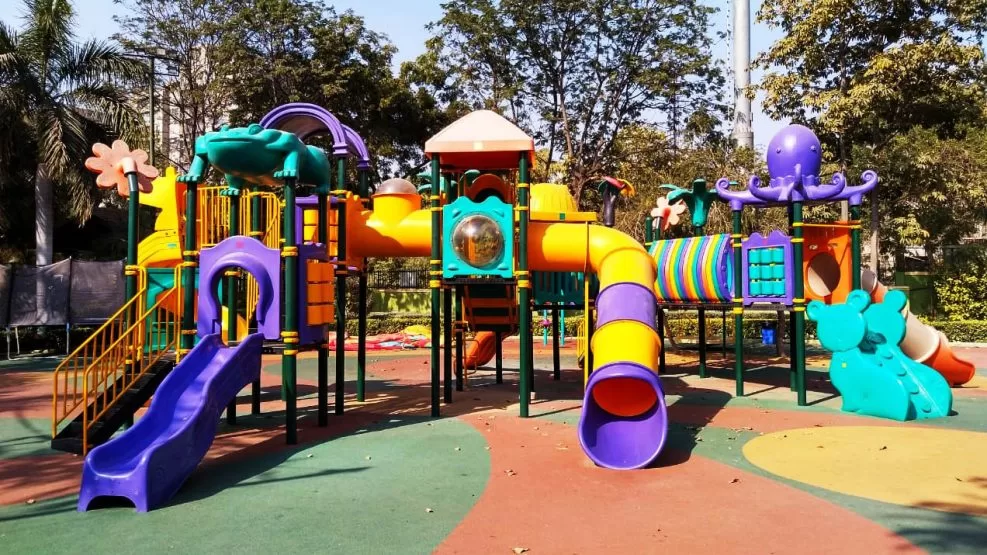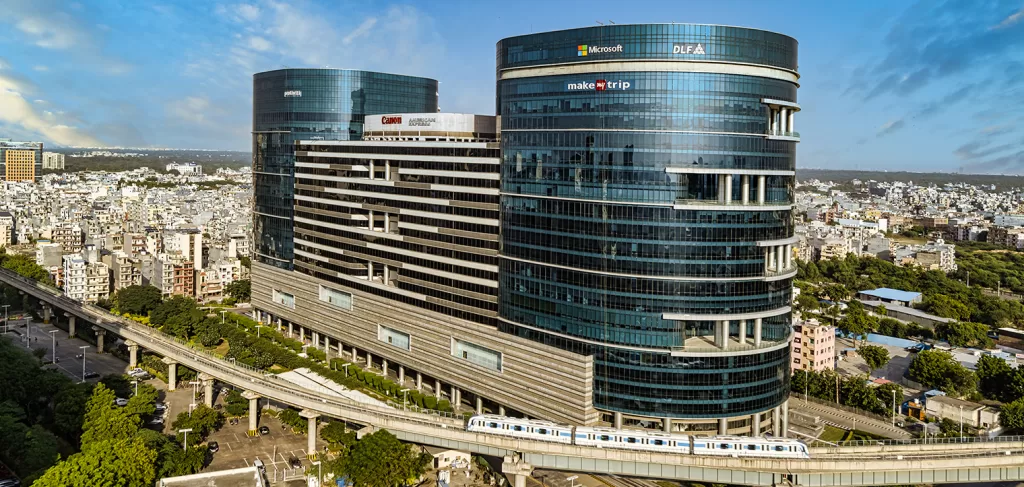06 Jan Urban Green Space: Breathing Life into the Concrete Jungle
Urban green spaces, such as parks, gardens, and urban forests, are crucial for improving air quality, regulating temperature, promoting biodiversity, and enhancing health and well-being. Urban green spaces serve as communal spaces for social activities, enhance aesthetic appeal, and contribute to local economies. They also enhance the cultural identity of a city and promote pedestrian-friendly environments. Sustainable urban development involves collaboration among planners, environmentalists, community members, and local authorities to balance infrastructure and economic development with the preservation and creation of urban green spaces. However, rapid urbanisation and population growth can reduce green spaces, making it difficult to balance urban development with green infrastructure.
What is Urban Green Space?

Urban green spaces are areas within urban environments that incorporate natural elements like vegetation, trees, and grass, providing environmental, social, and economic benefits. Urban green spaces can take various forms, such as parks, gardens, plazas, green roofs, and community spaces. The goal is to create a balance between the built environment and nature in densely populated urban areas. Key characteristics of urban green spaces include vegetation, recreational areas, social spaces, ecological functionality, cultural and aesthetic value, health and well-being, and economic considerations.

Vegetation contributes to improved air quality, biodiversity, and aesthetics, while recreational areas accommodate leisure activities and sports facilities. Social spaces foster a sense of community and well-being, while ecological functionality ensures habitats for various species, biodiversity, and environmental balance. Cultural and aesthetic value enhance the cityscape, while health and well-being benefit from access to green spaces. Economic considerations include increased property values, the attraction of businesses, and support for tourism and recreational activities. In India, Government initiatives like the Smart Cities Mission, Swachh Bharat Mission, and the National Urban Greening Guidelines are focusing on green and sustainable development. Increasing public awareness and involving communities in their maintenance and development are essential for preserving these spaces.
Types of Urban Green Space
1. Parks

City Parks and Pocket Parks are two distinct types of green spaces that shape urban environments. City Parks are large, well-planned areas that serve as hubs for recreational activities, social gatherings, and community events, contributing to the overall well-being of urban residents. They offer a variety of activities, including sports fields, playgrounds, walking trails, and community events.

Pocket Parks, on the other hand, are small, thoughtfully curated green spaces that serve as local sanctuaries within densely populated neighbourhoods. They are strategically positioned within neighbourhoods to provide a refuge from the concrete jungle, with a design philosophy that maximises the use of limited space. They provide a backdrop for community events, small-scale markets, and informal gatherings, enhancing the social cohesion of urban communities. Both City Parks and Pocket Parks play pivotal roles in enhancing the urban experience, catering to the diverse needs of a large and dynamic population. Together, these green spaces define the character and livability of urban environments, providing respites for nature amid the concrete landscapes of modern cities.
2. Green Roofs and Walls

Green roofs and walls are innovative urban design features that offer ecological, economic, and social benefits. Green roofs are elevated, vegetated surfaces that integrate nature into the urban fabric, reducing the urban heat island effect and lowering energy consumption. They also excel at stormwater management, absorbing rainwater, and promoting a sustainable water cycle.

Green roofs also create spaces for leisure and recreation, offering opportunities for social interaction and urban farming. Green walls, on the other hand, reimagine vertical surfaces as canvases for biodiversity, providing insulation and shade, reducing energy consumption, and enhancing air quality. They add a dynamic and visually stimulating element to urban landscapes, turning concrete structures into living artworks.
3. Educational and Therapeutic Gardens

Educational Gardens and Therapeutic Gardens are specialised green spaces designed to serve specific purposes within urban environments. Educational Gardens are outdoor spaces that facilitate learning about plants, ecosystems, sustainability, and environmental concepts. They offer interactive exhibits, demonstration areas, sensory gardens, and community engagement.

Educational Gardens promote environmental education and environmental responsibility, while Therapeutic Gardens focus on physical, psychological, and emotional well-being. They create tranquil environments with carefully chosen plants, comfortable seating, and peaceful surroundings. They are accessible to individuals with varying mobility levels, engage the senses through sensory stimulation, and offer secluded areas for privacy and meditation. Therapeutic Gardens are often integrated into healthcare facilities, rehabilitation centres, or community spaces, providing a place for solace and rejuvenation.
4. Playgrounds and sports fields

Playgrounds are dynamic spaces with various play structures, equipment, and features that promote physical activity, creativity, and social interaction. They are designed with safety measures, inclusive design, and educational elements.

Sports fields are expansive, open areas designed for various athletic activities, promoting physical fitness, teamwork, and community engagement. They offer open play areas, dedicated facilities, and spectator facilities. They also serve as venues for community events, fostering a sense of community and pride.
5. Urban Forest

Urban forests are vital ecosystems that integrate nature into urban areas, providing ecological, social, and economic benefits. They serve as habitats for diverse flora and fauna, promoting biodiversity conservation, air quality improvement, temperature regulation, stormwater management, and carbon sequestration. Access to urban forests has been linked to improved mental health and well-being, as they provide a peaceful retreat from urban stress. They also serve as recreational hubs, offering residents spaces for leisure activities, picnics, and family outings. Urban forests foster community engagement and ownership, with many featuring cultural and historical significance.

However, rapid urbanisation poses challenges to the preservation of urban forests, such as encroachment and fragmentation. Invasive species and pests may threaten the ecosystem’s health and diversity, necessitating proper management strategies. Sustainable management practices are essential to ensure the long-term health and viability of urban forests, including biodiversity conservation, tree health, and community engagement.
Benefits for Nature and People

Urban green spaces offer numerous benefits for both nature and people, enhancing the health and well-being of urban environments. They support biodiversity, provide ecosystem services, and help mitigate climate change by sequestering carbon dioxide. Act as natural sponges, absorbing rainwater and reducing stormwater runoff. Green spaces regulate temperature, reducing surface temperatures and mitigating the urban heat island effect.
Access to green spaces promotes physical health, mental well-being, social interaction, and quality of life. They enhance the aesthetic appeal of the environment, offer educational opportunities, and enhance property values. Additionally, they reduce noise and air pollution, promoting better air quality and respiratory health. The symbiotic relationship between green spaces, nature, and people is crucial for creating resilient and sustainable cities. Recognising and investing in these benefits is essential for fostering healthy, vibrant, and environmentally conscious urban communities.
Cubbon Park in Bangalore – Example of Urban Green Space

Cubbon Park in Bangalore, India, is a prime example of successful urban green space planning. Located in the city’s central business district, the park covers approximately 300 acres and is characterised by lush greenery, diverse plant life, recreational spaces, and integration with cultural and educational institutions. The park’s historical significance, well-maintained lawns, flowerbeds, and avenues of trees contribute to its aesthetic appeal. It offers ample space for various recreational activities, including walking, jogging, yoga, and designated areas for children’s play.

The park’s presence also enhances its value, with the State Central Library serving as an important cultural hub. Efforts have been made to preserve and enhance the park’s biodiversity, with practices such as water conservation and waste management incorporated into its maintenance. Cubbon Park’s strategic location in the city’s commercial and administrative hub makes it easily accessible to residents and visitors. It also serves as a venue for cultural events, public gatherings, and recreational activities, fostering community engagement. The park’s pedestrian-friendly design encourages a safer and more enjoyable experience for park-goers.
Gurgaon – Potential City where Urban Green Space needs to be implemented

Gurgaon, a city in India, has experienced rapid urbanization and industrialization, leading to a decrease in green spaces and environmental degradation. The city’s rapid growth has created a need for green spaces to balance development and environmental conservation. Urban green spaces can provide recreational opportunities, improve health and well-being, and contribute to biodiversity conservation. It serves as a focal point for community engagement and improves air quality by absorbing pollutants and providing oxygen.

Green spaces can also help manage stormwater, preventing flooding and improving water quality. Implementing green spaces aligns with sustainable urban development principles, creating a more resilient and environmentally friendly city. Additionally, ongoing urban development initiatives and local government policies may impact the implementation of green spaces. Overall, Gurgaon is a prime example of a city that could benefit from increased urban green spaces.
Conclusion
The lack of urban green space in India is a result of historical, social, economic, and planning factors. Rapid urbanization, land use change, inadequate planning, weak zoning regulations, economic development priorities, real estate development, population density, and land value pressures have led to a lack of green spaces. Addressing this issue of urban green space requires a multifaceted approach involving urban planning reforms, community awareness, policy changes, and sustainable development practices. The integration of urban green spaces into urban planning should consider the environmental, social, and health benefits they bring to communities.
Content Writing And Research By: Ar. Priyanshi Shah
The post Urban Green Space: Breathing Life into the Concrete Jungle appeared first on The Architects Diary.




No Comments